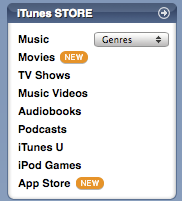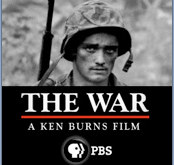Thursday, July 17, 2008
Spice up your Units with web2.0

You can use web2.0 applications in units that you use already in your classes.
Check out how I integrated web2.0 into a unit for Spanish, English and Socials about Illegal Teenage Migrants.
Social Bookmarks

Through social bookmarking, Web users share their sources of information by allowing anyone to copy their RSS feeds. So an educator, no matter how unfamiliar he or she is with online technology, can easily archive, for example, all of Richardson’s sources of research via sites such as Del.icio.us and Furl.net. This allows students and teachers to build Internet resource pages they can share and pass on to future classes.Are you tired of having your bookmarks wiped out each time your computer is re-imaged by the district? Organize all of your bookmarks on del.icio.us or Furl.net and share them with your learning community.
Source: http://judyoconnell.wordpress.com/
See how Letitia Sladden a teacher librarian in Delta organizes her bookmarks on Library 2.0
http://del.icio.us/477delish
Social Networks

This past year, I was shooing students off of facebook during class time in the library but I have come to re-think this practice. One of our students in Grade 11 Shannon Mclachlan is using facebook to raise $10,000 to build a school in Kenya with her friends here at Clayton. Also, students use facebook to do group study sessions and to work on projects for school. Check out some of the sites on this post and think about how you could use them in your classroom. Teachers in this school are already using facebook to Science videosWill Richardson [author of book: Blogs, Wikis, Podcasts and Other Powerful Web Tools for Classrooms calls these “social content-sharing sites,” the most notable being MySpace.com, where members create profiles, network, and share opinions, photos, and audio-visual content. But there are about as many social networking sites as there are interests, and among favorites are Flickr.com, where photographs are posted and shared, and the video-sharing site YouTube.com. Discover how to organise online resources for yourself, your colleagues and your students - and save time!
Source: http://judyoconnell.wordpress.com/
Ning.com
Ning in Education
Using Ning for Educational Social Networks
Life Beyond Facebook: Alternative Global Social Networks
A wiki page I created with a group of educators about student online use and privacy.
Teacher Tube: social network for teachers of instructional videos.
Photo Source: Scott Beale / Laughing Squid
Wednesday, July 16, 2008
Podcasting





Podcasting are audio and/or video recordings that can be listened to and watched at any time. You can subscribe to a podcast on itunes at your computer or you can create your own podcast and post it on our website.
Subscribe to CBC podcasts by using itunes and use them in your classroom(buy a set of speakers for your computer).
Choose a podcast you want to subscribe to and click on the Subscribe in itunes link. Everytime that a new program is added by the CBC it will download into your itunes when you open it.
Students listen to podcasts and write response pieces, you can create cloze exercises based on podcasts, or use a podcast as a model for an assignment you can them to do.
Online Resources for Using Podcasts in the Classroom:
Podcasts in the Classroom
Podcasting in the Classroom includes lesson plans and resources for teachers and students
Teacher Resources from itunes from Gareth Poon Teacher Librarian from T.E.Scott Elementary:
iTunes has free video clips from PBS, covering a range of science/history/geography topics. Of particular interest to Teacher-Librarians is the interviews with famous authors such as Chris Van Allsburg, Patricia Polacco, Gail Gibbons, Kate diCamillo, R.L. Stine, etc.
1. Launch iTunes.
2. Click on "iTunes Store" in the left-hand source menu of your iTunes window.
3. Click on "iTunes U" on the left-hand side.
From here, you have access to thousands of free podcasts and video clips relating to a number of subject areas from universities and organizations across North America (lectures from Noam Chomsky and podcasts about the global branding of Hello Kitty).
4. Click on the "PBS" button to access the teacher resources.
5. If you want to see the author interviews, then click on "WETA". If you want science/history/geography clips, click on one of the other links (such as KQED, and WNET).
6. Click on "Meet the Author"
7. Click on the "Get Movie" button to download the interview that you want.
8. After you have completely downloaded the video, click the play button to watch it. Press Apple+F to watch the clip in full screen.
*Check out the other links too. The documentary film called "The WAR" looks interesting (WWII), and there are lots of science video clips and free educator guides/lesson plans to accompany them. I think a lot of teachers will appreciate these resources!
VoiceThread
VoiceThread is an online media album that can hold essentially any type of media (images, documents and videos) and allows people to make comments in 5 different ways - using voice (with a microphone or telephone), text, audio file, or video (with a webcam) - and share them with anyone they wish. A VoiceThread allows group conversations to be collected and shared in one place, from anywhere in the worldVoiceThread is free for teachers but if they want to add on their students to a secure K-12 network then they have to pay either 10 dollars to be on the network or $60 dollars to have a whole class on the network. More info at Ed.VoiceThread.
Source: VoiceThread 4 Educators Wiki
Browse through some examples of educational VoiceThreads and see how students are using it to create stories, build understanding, and post their artwork. This site is like doing a gallery walk of students' projects but students can use a variety of ways to comment on another student's work and then they can have a dialogue about it. Click on the image above and see a VoiceThread made by a teacher about political cartoons about Darfur.
View this VoiceThread of using web 2.0 in education.
Blogs
Blogs (not a Blob as I once called them to a class...nice!!)
Perhaps the most powerful Internet tool is the Weblog, or blog, an online journal that is continuously updated by its author or authors. Blogs are Web sites that facilitate instantaneous publication and allow for feedback from readers. They’ve been used to form professional development communities, both within one school and across continents. Catch up with the trend that is sweeping the world of online learning: the use of Blogs K-12.Free Blogging Sites:
Source: http://judyoconnell.wordpress.com/
Blogger
Edublogs (free, no advertising)
Typepad (provides a free trial and then it costs)
WordPress (provides a basic blog for free and then it costs)
BC Blog Queen
Judith Comfort the teacher librarian at Charles Best Secondary is a blog queen and she has created many useful blogs for the teachers at her school ranging from online ethics, Science 9 Curriculum, and News Feeds in the Classroom.
Check out her best virtual sites:
http://www.bestlibrary.org/best/
Online Resources for Using Blogs in the Classroom:
http://weblogg-ed.com/
http://www.det.wa.edu.au/education/cmis/eval/curriculum/ict/weblogs/
Check out how you can use Blogs in Literature Circles in English
Source: litcircles20.blogspot.com (Student Group from UBC LIBE 477 Summer 2008)
Cathy Gutowski's English students at Clayton are studying the novel Night by Elie Wiesel with her English classes and Google Lit Trips uses Google Earth to take students on a unique literary road trip.
Thursday, July 10, 2008
Wikis
A wiki is a communal, subject-specific Web site where users are free to add and/or edit content. When it comes to Internet-based collaboration, there’s nothing easier to use, according to Richardson. In schools, wikis enable groups of students, teachers, or both to gather content and share written work. Some classes create their own textbooks and resource sites. Take a look at Wikis and plan how you can use them for learning and teaching, for projects, professional development, or library resources.So a wiki (quick in Hawaiian) is a site that can be modified by a group of people collaborating on a specific project.
Source: http://judyoconnell.wordpress.com/
Wiki video from CommonCraft: They explain technology in "plain English"!
You probably know wikis through wikipedia and the controversy around the use of this resource in schools. There are many providers of wikis but I especially like Wikispaces and they are offering 100,000 free wikis to educators. So register for a wikispace as there are only about 20, 000 left for the taking. Now that you have it what can you do with it? I am really excited about the possibilities of using wikis in our school. I created my first wikispaces this summer for collaborating my group for the course LLED 477 at UBC. The wiki explores privacy issues for students online and for revamping a unit I designed about Illegal Teenage Migrants. If I can do it so can you!
Online Wiki Resources:
Teachers First Wiki Walkthrough
Educational Wikis from Wikispaces
Kevin Amboe's Sample Educational Wiki Sites
To wiki or not to wiki: ideas for using wikis at Clayton Heights
- Write a short story/novel collaboratively in an English class. Each student writes a chapter and then they edit together. Students can create alternative chapters, point of view, and endings.
- Use it as a communication or planning tool for committee work or department work in the school. Participants can focus on the task and edit work in their pyjamas from home or more sensibly from their desk in their class not in their pyjamas.
- Collaborate on designing unit with students: teacher provides the theme and students give ideas or feedback on the proposed learning. The teacher works as a facilitator of learning instead of sage. Students own the learning instead of having a project imposed upon them.
- Cut down on whining for group projects "I had to work, We couldn't get together". Students do group projects on a wiki = no paper, teacher can assess on who really contributes and how. Teacher can assess progress week by week focusing on a different area e.g. critical thinking.
- Tutorials for exam preparation.
- Frame a class event: info to view before a field trip, peer editing of students' work.
Issues about Students' Online Life

https://libe477.wikispaces.com/
Life Beyond Facebook
Student Privacy: Rights and Responsibilities
The New World of Bibliography
The Wild West of Media Hustling
Cartoon Source: Jaime McKenzie http://fno.org/sum08/sumcartoon.html
Do schools today kill creativity? Sir Ken Robinson, TEDTalks
How do you promote creativity in your classroom?
Check out how Marco Torres a teacher from California uses film production to engage students. http://www.sfett.com/
How do you promote creativity in your classroom?
Check out how Marco Torres a teacher from California uses film production to engage students. http://www.sfett.com/
Friday, July 4, 2008
Comic Life

Comic Life is a creative software program created by plasq.com that you can use it in many ways with your students.
Check out the Comic Life Tutorial created by Surrey teacher Gareth Poon
http://sd36imlexamples.wikispaces.com/space/showimage/ComicLife%20Tutorial.pdf
Tech Ed: How to use Comic Life in the Classroom
Tech Ed Help Teacher Kevin Amboe's site with SD36 teachers' examples of how they use technology in the classroom
Kevin Amboe's site. Check out the videos about Web 2.0 applications and the links on the side bar.
Suggestions on how to use Comic Life in your classroom from Charlene Chausis from the U.S.

Check out the educational version of Glogster to make interactive online posters with graphic and music. Oh the poster project just went viral!
Here are some educational ideas about Glogster.
Here is how to use Glogster in your classroom.
Watch a video about integrating Glogster in your teaching.
Subscribe to:
Posts (Atom)



